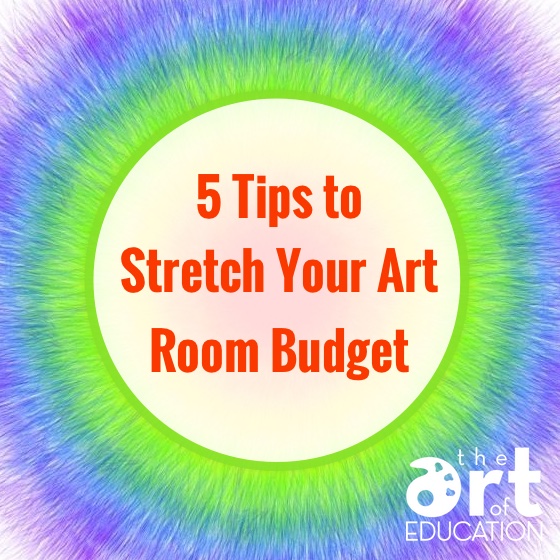I get an average of $1.67 per student per year for my art budget. That isn’t much money when you figure it needs to cover all the projects for the whole year. In 14 years of teaching, I have discovered a few ways to make my $1.67 go a long, long way.
Here are 5 tips to stretch your art room budget.
1: Use technology when possible.
At my school, I have access to 3 iPad sets and 4 computer labs. By signing up to use them, I save myself money. For example, I haven’t bought mirrors for drawing portraits because I have students take selfies on the iPads instead. Another example is that I have my students start our color unit by creating color wheels on the computer; they are able to learn about and explore color, but I have no cost for materials. If you’d like to learn more about bringing technology into your art room, AOE’s iPads in the Art Room class would be a great bet.
2: Look for cheaper alternatives.
I would love for all 600 of my students to glaze their clay pieces, but since my budget doesn’t allow for that, I have to pull out other supplies. We use oil pastels with black paint, tempera paint with gloss varnish or watercolor paints. If your budget doesn’t have money for jewelry making supplies, use paper to create beads and pendants. If your budget doesn’t allow for clay, use paper mache. There is always a creative alternative!
3: Make expensive projects and supplies wait.
Select certain grade levels to use more expensive supplies with, like printing ink, canvases or colored Sharpies. There are projects that only my 6th graders get to do, which makes students really look forward to them. Limiting expensive supplies to smaller groups of students saves me money and makes some projects “a big deal” for students.
4: Ask for help and keep large investments separate.
After a few years of teaching, I realized the teacher before me had bought cheap brushes. Rather than fit the expense of new brushes into my budget, I asked my principal if he would buy me some. I had to wait until the following school year, but I was able to buy really nice brushes without impacting my budget. Principals sometimes have a bit of a cushion, but they won’t know you need it if you don’t ask!
5: Ask around town.
Our local printing shop once donated several thousand sheets of superior quality paper to the art department. They were end cuts from a printing job and were 11” x 44” but, for free, I can cut paper. When I wanted to create minecraft figures with my students, our local lumber yard was willing to cut up their scrap wood and donate it. If you receive a gift from a company in your community, make sure to thank them; it makes them more willing to donate in the future!
Armed with these simple strategies, you’ll be on your way to getting the art room you want with the budget you have!
How much money do you get per student? What are some ways you stretch it?
What’s one thing that you feel is worth investing in?
Magazine articles and podcasts are opinions of professional education contributors and do not necessarily represent the position of the Art of Education University (AOEU) or its academic offerings. Contributors use terms in the way they are most often talked about in the scope of their educational experiences.





